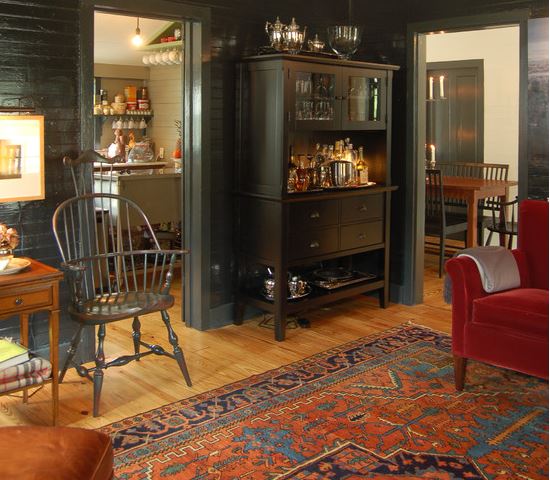Antique Persian Heriz Rugs
Antique Persian Heriz Rugs are named after the largest town in a district of over 30 villages, in the mountainous area of Northwest Persia, 50 miles east of Tabriz. The inception of the classic “diamond on a square” medallion Heriz was probably in the third quarter of the nineteenth century. Heriz rugs are Persian rugs from the area of Heris, East Azerbaijan in northwest Iran, northeast of Tabriz. Such rugs are produced in the village of the same name in the slopes of Mount Sabalan. The pattern is almost always geometric, although some Heriz rugs have an all-over layout often together with geometric floral motives and less frequently curvilinear floral motives.
Heriz rugs are durable and hard-wearing and they can last for generations. Since the Heriz region is not too far from the Caucasus, many Heriz Rugs have similar colors and drawings to Caucasian rugs. The most common colors are brownish red, light and dark pink, light and dark blue, greens, yellows and ivory. Blue and ivory are normally added to increase contrast. In home design, Heriz rugs are beloved for their versatility. Their geometry complements modern furnishings and their warm colors and artistic depth enhance antiques of all kinds. Their richness of color and strength of design make heriz rugs a common choice for corporate settings as well. The earliest Heriz export rugs were apparently modeled on a fairly common late 19th century Saruk central medallion design. The Saruk’s typically dark blue medallion and pendants, the contrasting spandrels, the red-ground main border, and even the tree forms seen in the field, were carefully reproduced in early Heriz Rugs. The one major variation was the widespread use of the ‘turtle’ main border pattern, almost certainly derived from the ubiquitous classical cloudband and palmette form.
The Heriz rug is now the Iron Rug of Iran. Heriz rugs are thick, tough, and often inexpensive that appeal strongly to the US market. The style of antique Heriz rugs and antique Serapi rugs (both originating from the same region of Iran) is a paradigm for the traditional geometric designs of Northwest Iran. These distinctive rugs are woven with tribal weaves which accentuates the angles and boldness exhibited in the highly stylized floral motifs. Heriz rugs are the jeeps of the rug world – cheap to make, durable and easy to repair.
Once asked how she chose the colors to be used for her rug, a Heriz rug weaver pointed at the sunset that was just occurring. Certainly, the antique Heriz rug makers were consummate masters of vegetable dyeing. While the Heriz rugs of the last 20-40 years are often chemically dyed, with the best using a mixture of natural and chemical, older antique Herize rugs tend to have been made with pure vegetable dyes. These have mellowed and attained a wonderful patina with age.
The terms Heriz, Serapi, and Gorevan are named after towns. However, these terms now refer to quality rather than the actual town of origin. Similar rugs from the neighbouring towns and villages of the Heriz region are Afshar, Heris, Mehraban, Sarab, Bakhshaish, and Gorevan.
Source:
http://www.tschebullantiquerugs.com/






